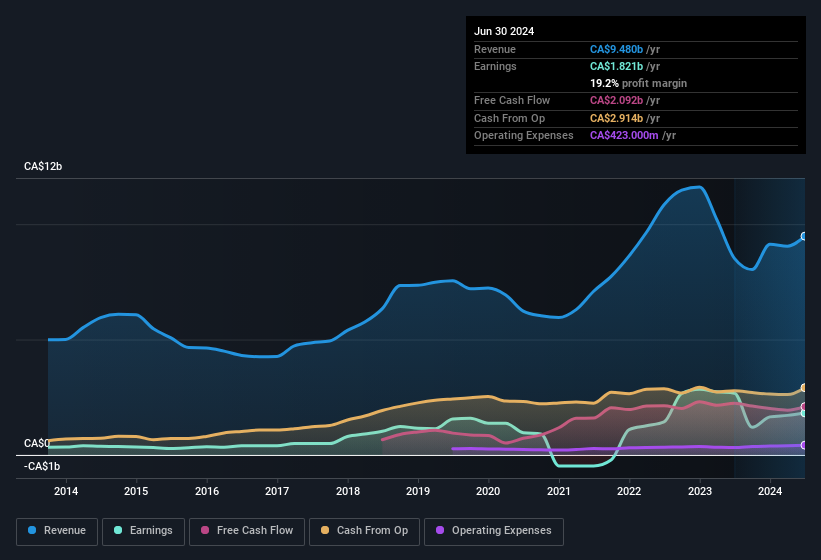Investors Can Find Comfort In Pembina Pipeline's (TSE:PPL) Earnings Quality
The market for Pembina Pipeline Corporation's (TSE:PPL) shares didn't move much after it posted weak earnings recently. Our analysis suggests that while the profits are soft, the foundations of the business are strong.
Check out our latest analysis for Pembina Pipeline
In order to understand the potential for per share returns, it is essential to consider how much a company is diluting shareholders. As it happens, Pembina Pipeline issued 5.6% more new shares over the last year. As a result, its net income is now split between a greater number of shares. To celebrate net income while ignoring dilution is like rejoicing because you have a single slice of a larger pizza, but ignoring the fact that the pizza is now cut into many more slices. Check out Pembina Pipeline's historical EPS growth by clicking on this link.
A Look At The Impact Of Pembina Pipeline's Dilution On Its Earnings Per Share (EPS)
Pembina Pipeline was losing money three years ago. Even looking at the last year, profit was still down 32%. Sadly, earnings per share fell further, down a full 33% in that time. So you can see that the dilution has had a bit of an impact on shareholders.
If Pembina Pipeline's EPS can grow over time then that drastically improves the chances of the share price moving in the same direction. However, if its profit increases while its earnings per share stay flat (or even fall) then shareholders might not see much benefit. For that reason, you could say that EPS is more important that net income in the long run, assuming the goal is to assess whether a company's share price might grow.
That might leave you wondering what analysts are forecasting in terms of future profitability. Luckily, you can click here to see an interactive graph depicting future profitability, based on their estimates.
The Impact Of Unusual Items On Profit
On top of the dilution, we should also consider the CA$385m impact of unusual items in the last year, which had the effect of suppressing profit. It's never great to see unusual items costing the company profits, but on the upside, things might improve sooner rather than later. When we analysed the vast majority of listed companies worldwide, we found that significant unusual items are often not repeated. And, after all, that's exactly what the accounting terminology implies. Assuming those unusual expenses don't come up again, we'd therefore expect Pembina Pipeline to produce a higher profit next year, all else being equal.
Our Take On Pembina Pipeline's Profit Performance
To sum it all up, Pembina Pipeline took a hit from unusual items which pushed its profit down; without that, it would have made more money. But on the other hand, the company issued more shares, so without buying more shares each shareholder will end up with a smaller part of the profit. Given the contrasting considerations, we don't have a strong view as to whether Pembina Pipeline's profits are an apt reflection of its underlying potential for profit. So if you'd like to dive deeper into this stock, it's crucial to consider any risks it's facing. While conducting our analysis, we found that Pembina Pipeline has 4 warning signs and it would be unwise to ignore them.
Our examination of Pembina Pipeline has focussed on certain factors that can make its earnings look better than they are. But there are plenty of other ways to inform your opinion of a company. For example, many people consider a high return on equity as an indication of favorable business economics, while others like to 'follow the money' and search out stocks that insiders are buying. So you may wish to see this free collection of companies boasting high return on equity, or this list of stocks with high insider ownership.
Have feedback on this article? Concerned about the content? Get in touch with us directly. Alternatively, email editorial-team (at) simplywallst.com.
This article by Simply Wall St is general in nature. We provide commentary based on historical data and analyst forecasts only using an unbiased methodology and our articles are not intended to be financial advice. It does not constitute a recommendation to buy or sell any stock, and does not take account of your objectives, or your financial situation. We aim to bring you long-term focused analysis driven by fundamental data. Note that our analysis may not factor in the latest price-sensitive company announcements or qualitative material. Simply Wall St has no position in any stocks mentioned.
